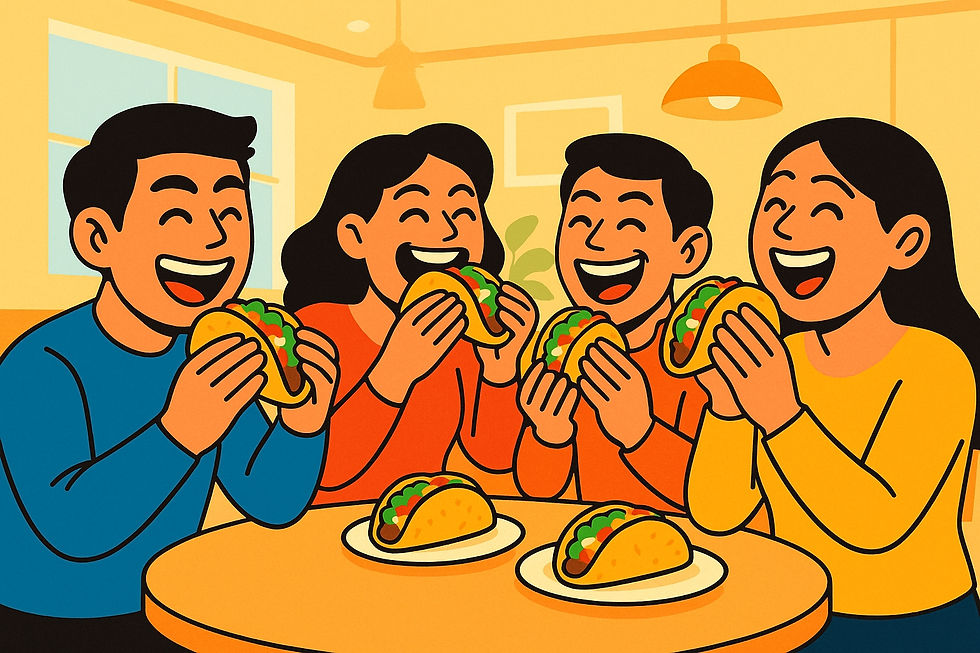🏫 “If CPU, GPU, and NPU were grad students?” Explaining tricky AI terms super easily!
- Editor H
- Jul 6
- 4 min read

😵💫🌀 “Wait, I don’t even get what a CPU is—so what’s a GPU? And what the heck is an NPU...?”
When you think of AI, you probably think of Nvidia. Their stock’s been soaring, and you might even be eyeing it for investment. But then you start reading about AI hardware and… wow. All these terms just hit you at once, and your brain feels like it’s going to explode.
So, for anyone who wants a simple explanation of these three terms in one go, here you go!
🤓🛠️ CPU = All-round Expert (aka Central Processing Unit)
Think of the CPU as an “all-rounder” grad student. Give it any kind of task—writing, math, organizing data, web browsing—and it’ll do it reliably and carefully. It’s smart, detail-oriented, and you can trust it to get things done.
But here’s the catch: it can only handle so much at once. Imagine a professor says:
“Hey, can you grade these 1,000 exam papers?”
The CPU will go through them one by one, slowly but surely. Super accurate—but painfully slow when it comes to big, repetitive workloads.
That’s when the CPU goes:
“Ugh, I can’t do this alone. I need help.”
And calls in its friend, the GPU.
🔁🧮 GPU = Repetition Specialist (aka Graphics Processing Unit)
The GPU is totally different. It’s the “repetitive task expert” in the team. It shines when you have to do the same operation thousands of times.
Let’s go back to the exam example. Instead of grading 1,000 papers one by one, the GPU is like a giant automated machine in a factory. It lays them all out and grades them all at once. Boom—done in seconds.
The GPU is built for massive parallel processing. It can handle tons of simple, repeated calculations simultaneously.
For example, think about processing an image. A photo is made up of millions of tiny colored dots (pixels). If you want to edit that image, you have to process every pixel.
The CPU would handle each pixel one at a time. The GPU processes them all at once. Like mass-producing a million parts in a factory simultaneously.
🤔❓ But there’s a tougher problem: Recognizing Faces
Now the professor gives a new assignment:
“Look at these 1,000 student photos and tell me who’s who.”
And the CPU and GPU both panic.
This task isn’t just about repetitive grading anymore—it requires understanding. The CPU could do it, but it would be super slow, checking carefully one by one.
The GPU can process tons of images at once, but it doesn’t really understand who’s in them.
So they call in a new specialist: the NPU.
🤖🧠 NPU = The AI Expert Grad Student (aka Neural Processing Unit)
The NPU is built for tasks that involve understanding and interpreting meaning.
It’s not just crunching numbers—it can look at an image and figure out:
“This is Minji Kim, that’s Cheolsu Lee.”
Some examples of what NPUs excel at:
✅ Recognizing whether a photo is of a dog or a cat
✅ Converting spoken words to text
✅ Translating foreign sentences naturally
✅ Recommending videos you’ll probably like
Basically, all those tasks where a human has to think, understand, and decide—the NPU does them fast and efficiently.
Sure, the CPU could do these things, but it would take way longer. NPUs are specialized hardware designed specifically for these kinds of AI tasks.
🤔❓ So if I have an NPU, do I even need a CPU or GPU?
Nope! An NPU alone isn’t enough to run your computer or phone.
The CPU is the “brain” that runs your device overall: writing docs, browsing the web, managing files, running apps. Without it, your computer just won’t work.
The GPU handles games, video editing, and any job that involves tons of repeated calculations—really fast.
The NPU specializes in “AI tasks” like face recognition, voice commands, and translations.
They’re all teammates, each with their own strengths. That’s why computers and smartphones need all three working together.
🗒️ Quick Roles Recap:
✅ CPU = General manager for everything
✅ GPU = Super-fast at repetitive/graphic-heavy tasks
✅ NPU = Smart at AI stuff like face recognition, voice, translation
🍪 Bonus (skip if you want, but good to know!):
CPUs have multiple “cores” (think of them as workers). A 4-core CPU can do four things at once. But it can’t match a GPU’s thousands of cores designed for doing the same calculation in parallel.
GPUs are crucial for deep learning (where computers “learn” by mimicking the brain). But while GPUs train AI models well, the actual interpretation or judgment part can be done faster on NPUs.
NPUs aren’t in every device—they’re mostly in smartphones, IoT gadgets, and some PCs/servers, where you want to run AI tasks quickly and efficiently. They’re also expensive!
GPUs were originally for graphics and video but now get used a ton for large-scale parallel AI training.
Thumbnail image credit: Generative AI




![[Deep Dive] The Escalating Threat of YouTube Comment Bots](https://static.wixstatic.com/media/42906c_3ef5562c75b44c0bb0e970623436dbec~mv2.png/v1/fill/w_980,h_653,al_c,q_90,usm_0.66_1.00_0.01,enc_avif,quality_auto/42906c_3ef5562c75b44c0bb0e970623436dbec~mv2.png)


Comments